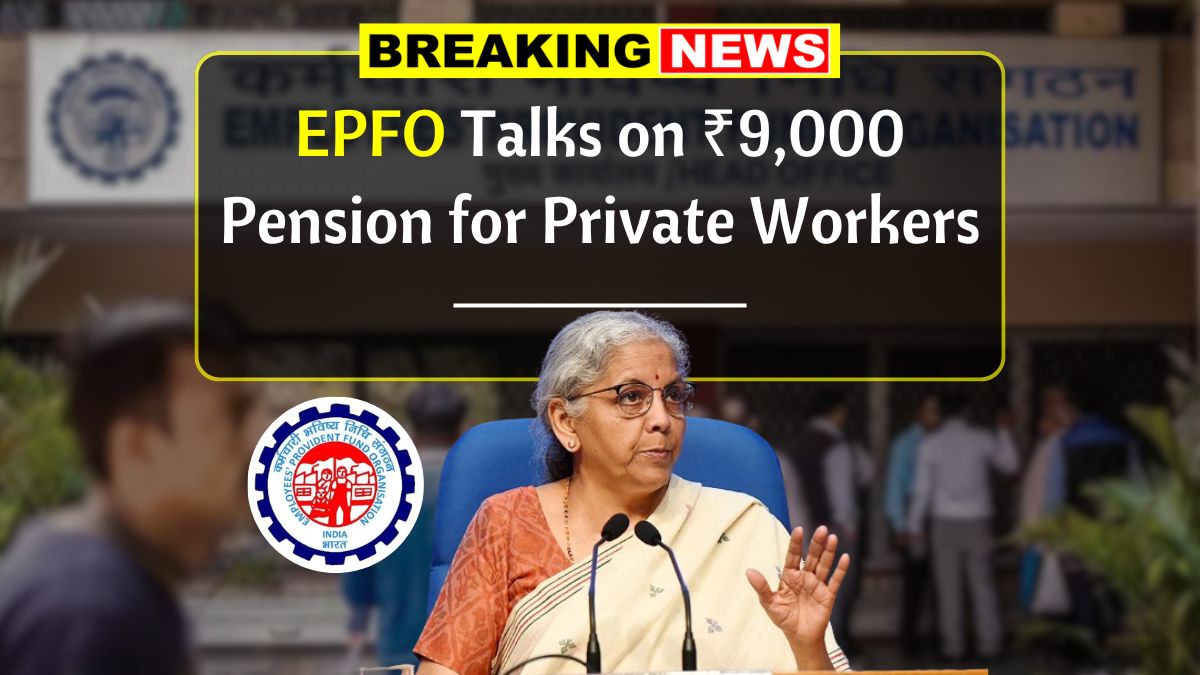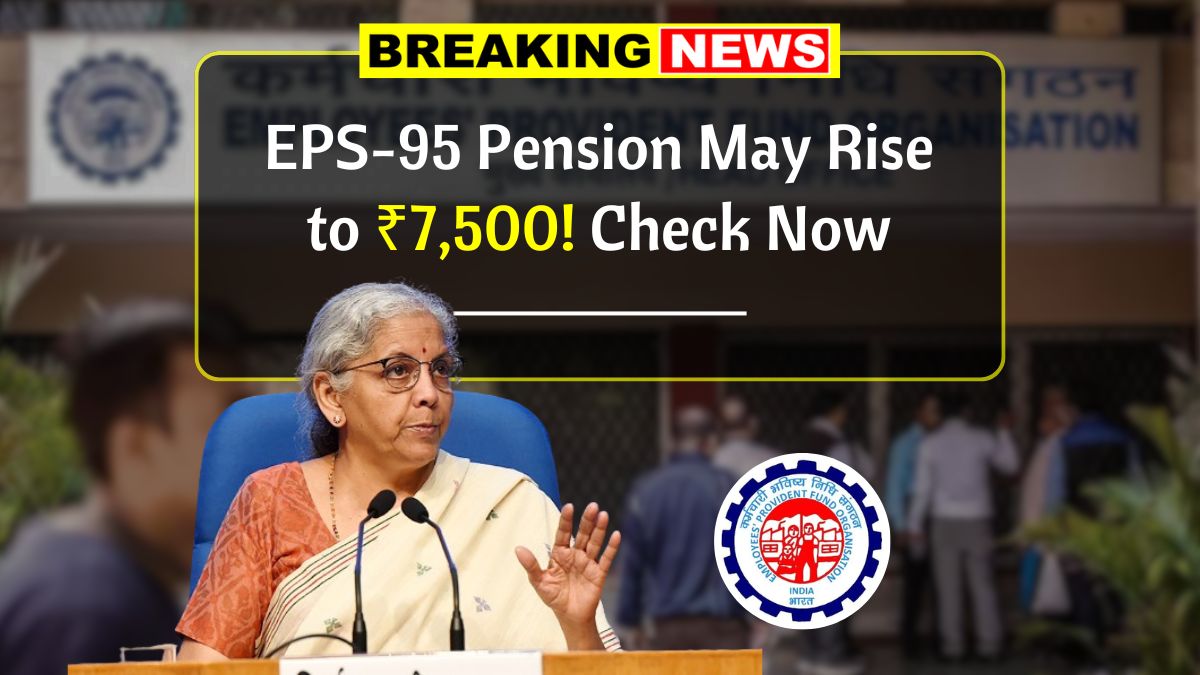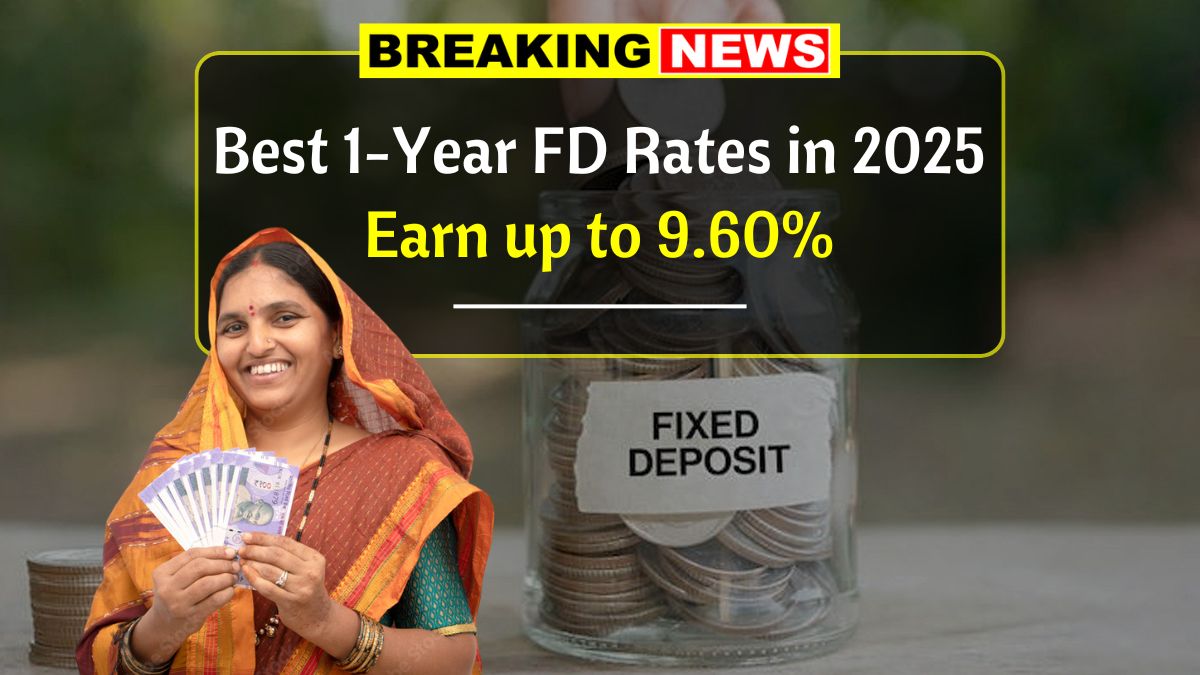EPS Pension Hike – If you’re a private sector employee or retiree keeping tabs on pension-related news, you’re going to love this update. The Employees’ Provident Fund Organisation (EPFO) has announced a ₹3,000 hike in the EPS (Employees’ Pension Scheme)—a long-awaited move that’s giving retired workers across India something to celebrate.
This new rule is a much-needed boost for those who have spent their entire careers in private jobs with modest retirement benefits. Let’s break it all down in a simple, casual way and understand what this change means, how it will affect you, and what to expect in the future.
What’s Happening: EPS Pension Goes Up by ₹3,000
Yes, you heard it right. The EPFO has officially rolled out a revision in the base pension under EPS, increasing the monthly pension amount from ₹2,500 to ₹5,500. That’s a direct hike of ₹3,000, and it’s effective immediately.
This decision is being hailed as a landmark move in the pension space, especially for the private sector retirees who have long been advocating for better post-retirement financial support.
Why This Hike Is a Big Deal
Let’s face it—₹2,500 a month was barely enough to survive on in today’s inflation-ridden world. With the cost of groceries, medical expenses, and other essentials constantly on the rise, retirees were struggling to make ends meet.
With the new pension amount set at ₹5,500, things are looking a bit brighter. Here’s how this hike can make a difference:
- Better monthly income to manage rising household costs.
- Improved access to healthcare, medication, and emergency treatment.
- Increased confidence and independence for pensioners who don’t want to rely on their children.
- Support for dependents—many retirees still care for spouses or other family members.
- More room for savings, even after covering basic needs.
What Retirees and Experts Are Saying
Reactions from the community have been overwhelmingly positive. Here’s a summary of the buzz:
- Retirees say this is a “life-changing” move that finally gives them dignity and breathing space.
- Financial experts are calling it a timely update, especially as inflation eats into fixed incomes.
- There are growing calls for the government to regularly review pension adequacy, not just wait for years.
- Some are hoping for similar changes to other retirement schemes like NPS or gratuity-based pensions.
What’s in the New EPFO Rule?
Let’s get into the specifics. Here’s a side-by-side comparison of the previous and current EPS pension structure:
| Parameter | Before | Now | Change |
|---|---|---|---|
| Base Pension | ₹2,500 | ₹5,500 | +₹3,000 |
| Eligibility | EPS members | Same | No change |
| Implementation Date | — | Immediate | — |
| Review Period | 5 years | 3 years | More frequent |
| Extra Benefits | None | Healthcare support | Newly added |
| Indexation (inflation tie-in) | No | Yes | Introduced |
The introduction of indexation is a crucial move. It means future pension amounts may increase automatically to keep up with inflation—something that was long overdue.
What Are the Challenges Ahead?
Sure, the hike is great, but there are still a few things to keep an eye on. The EPFO and government need to make sure this change is sustainable in the long run.
Here are some key concerns:
- Will the pension fund remain financially stable if benefits continue to increase?
- How will inflation affect the value of ₹5,500 in another 3–5 years?
- Is there a system in place to ensure on-time disbursement of pensions?
- Are there plans to digitize pension tracking and updates for retirees?
These are valid questions that the EPFO will need to address proactively.
What’s Next for the EPFO?
The good news is that this change isn’t the end—it’s just the beginning. According to insider reports and official statements, the EPFO is gearing up for more reforms. Here’s what might come next:
- Regular pension reviews every 3 years.
- Introduction of healthcare packages and insurance options for pensioners.
- More digital services for account tracking, balance checks, and pension status.
- Better communication of changes to members via SMS and email.
- Broader awareness campaigns to help new and existing employees plan for retirement.
Broader Economic Impact
You might be wondering—does a pension hike really affect the economy? The short answer is yes.
When retirees get more money, they spend more—on groceries, medicines, services, travel, etc. This increase in consumer spending can:
- Boost local economies
- Support small businesses
- Create a ripple effect across various sectors
So, in a way, this ₹3,000 hike doesn’t just help retirees—it helps the entire country move forward.
In a country where the private sector often gets overshadowed by government benefits, this pension increase sends a powerful message. It acknowledges the decades of hard work put in by private employees and gives them a sense of security they’ve long deserved.
Of course, there’s still a long way to go in terms of making the pension system fully robust, but this is a great step in the right direction. For now, it’s a moment to celebrate.
- EPS pension increased from ₹2,500 to ₹5,500
- Immediate benefit to lakhs of private sector retirees
- Added healthcare support and inflation-indexing introduced
- Future reforms expected to strengthen the pension system further
So, if you or someone in your family is an EPS beneficiary, this is a big and positive change. Make sure to stay updated through official EPFO channels and check your monthly statements for the revised amount.
















